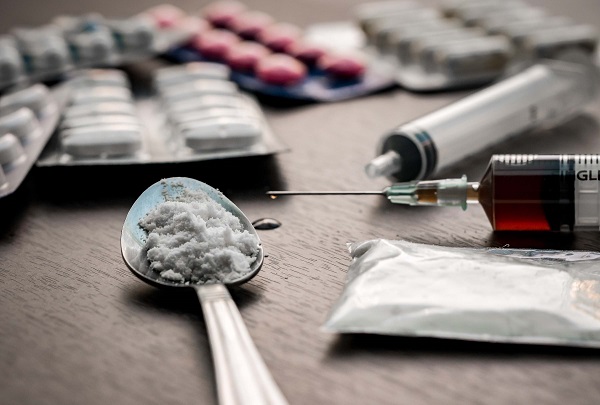Whether it’s addiction, dependence, craving, or fixation, different cultures and languages have their own terms to describe this intense attachment that can develop towards drugs. For thousands of years, drugs were considered a minor irritant: substances naturally found in our foods in low amounts, but not potent enough to hurt anyone. For example, overripe fruits contain alcohol, vegetable roots can contain kavalactones, and dried leaves can contain nicotine or cannabis. Over the past 10,000 years, humans perfected their agricultural technique: we cultivated and domesticated plants to contain exponentially higher amounts of the ingredients we sought. This led to bigger and tastier bananas, larger taro roots, but it also led to more alcohol in fermenting fruits, more potent kava and more hallucinogenic cannabis. What was once a nuisance could now potentially derail one’s life. This problem was first recognised in the 1600’s. Over this period of time, people tried addressing the problem of addiction through many different ways. As we think about addiction today, we inherit an accumulation of perspectives over the past 400 years. I call addiction a “sandwich term” because we are mixing different histories and viewpoints as if they were a single coherent perspective. Here, I take this sandwich apart and look at each perspective separately.
The moral model
One of the early perspectives in the 1600’s considered excessive use of substances as morally wrong, viewing those who indulged as weak or sinful. Initially, religions adopted this view, but over time the moderate use of substances was approved and individual choice was permitted. This led to increased reliance and excessive use of substances like alcohol, which led to total ban of most drugs for many centuries. For example, Hinduism, Buddhism, and Islam have completely banned the use of alcohol and recreational drug use for a long time. In Judaism and Christianity, the use of alcohol in religious rituals has imparted a message that this sacramental substance should be respected and not abused.
The criminal model
Here, addiction was seen as a crime against society, with punitive measures often in place to deter substance abuse. Depending on the society and historical time, drinking in public was often punished. This still persists in many societies today partially including Fiji. While substances such as alcohol and kava are permitted, other substances like marijuana, cocaine or opioids are not. The “war on drugs” approach in many countries takes the view that drugs forced on innocent people by criminal producers and traffickers.
The preternatural model
Some believed that addictive substances possessed supernatural powers, making them inherently evil and controlling the user’s actions. In fact, alcohol, opium, or cannabis are so demonic that any use is considered sinful, so that the person’s inherent goodness is questioned. Well-known individuals who have made significant contributions to society, sciences have had addictions: the famed American author and Nobel Prize winner (1954) Ernest Hemingway, post-impressionist painter Vincent van Gogh who produced the most famous art in the world such as “Starry Night” and “Sunflowers,” or inventor of the telephone, Alexander Graham Bell have all had addictions. Were they all inherently evil? As time progressed, especially between 1600 and 1900, new views emerged:
The epidemic model
This model saw addiction as a disease spreading through communities, often exacerbated by societal changes like modernity. Epidemiologists control drugs by studying how it spreads through the population, introduce control measures like limiting sales, introducing public health advisories or education and outreach programs.
The illness model
Recognising addiction as a sickness, this model advocated for medical treatment and compassionate care for those affected. The addicted person must view themselves as sick and in need of a cure. This step, involving illness behaviour, occurs after a period of misery and dysfunction. Second, those around the person must be willing to offer the person a period of relief from ordinary social expectations and responsibilities, in order to permit treatment and recovery. This involved social assignment of a temporary sick role. Third, a culturally approved or licensed health care worker must ordain that disease exists and treatment is warranted. The social assignment of a sick role usually continues as long as the suffering person is willing to undergo the physical, psychological, or social burdens associated with treatment.
Modern understanding of addiction
In more recent times, our understanding has deepened, acknowledging various factors that contribute to addiction:
The personality disorder model
Early 1900s theories categorized addiction as a type of antisocial personality disorder.
The neurotransmitter model
This modern approach focuses on how substances mimic or interfere with our brain’s natural chemicals, affecting moods and behaviours.
The genetic model
Studies show that genetics can play a significant role in an individual’s susceptibility to addiction.
Fiji takes a variety of views when it comes to drugs. Kava and alcohol are typically approached from a compassionate view, whereas other drugs such as marijuana or synthetic drugs are viewed from a criminal model. Choosing different perspectives depending on the drug makes it more challenging to find a unified approach.
Addiction in our daily lives
In our community, understanding and addressing addiction is crucial. Recognising the signs and offering support can make a significant difference. Whether it’s through community support groups, medical help, or simply spreading awareness, every effort counts towards healing our society. While there’s no one-size-fits-all solution to addiction, the evolving models offer new ways to understand and address this complex issue. From treating addiction as a disease to exploring genetic factors, our approach continues to grow, aiming for effective prevention and compassionate care. Let’s continue to support each other and work towards a healthier, addiction-free community here in Fiji. Remember, understanding is the first step towards healing!
- DR LEVENTE L ORBAN is a psychology lecturer at the University of the South Pacific. The views expressed in this article are not necessarily shared by this newspaper.



